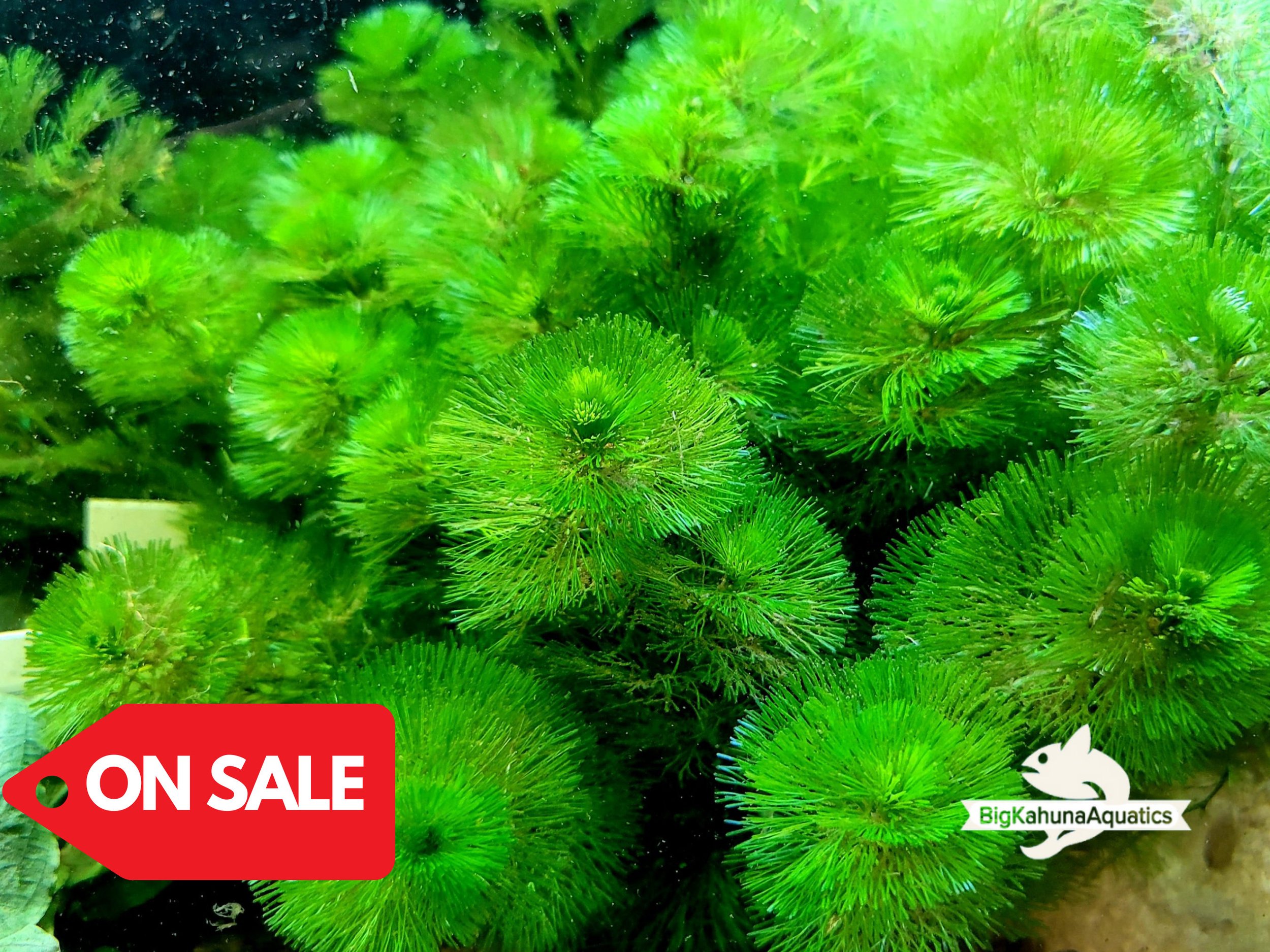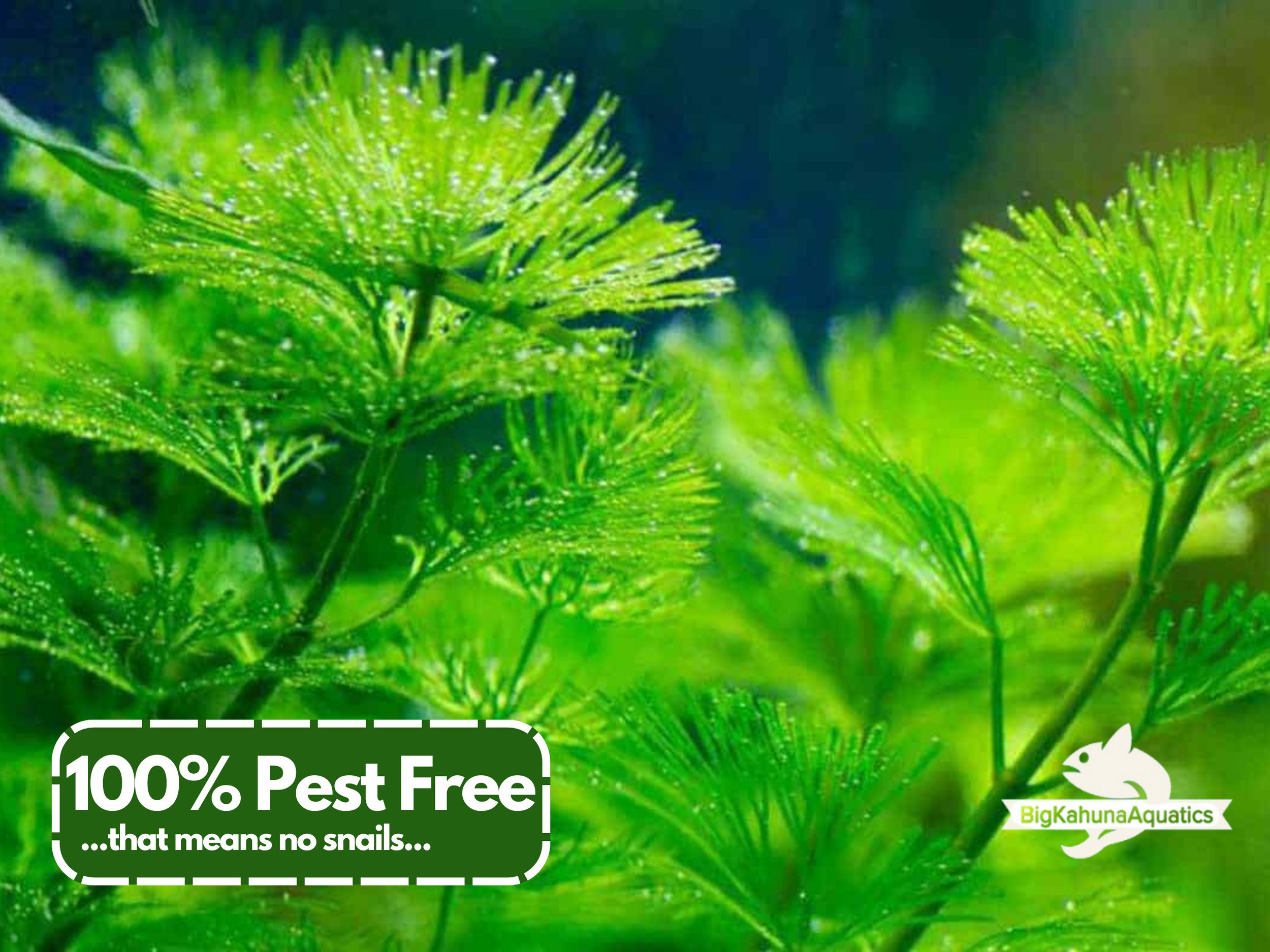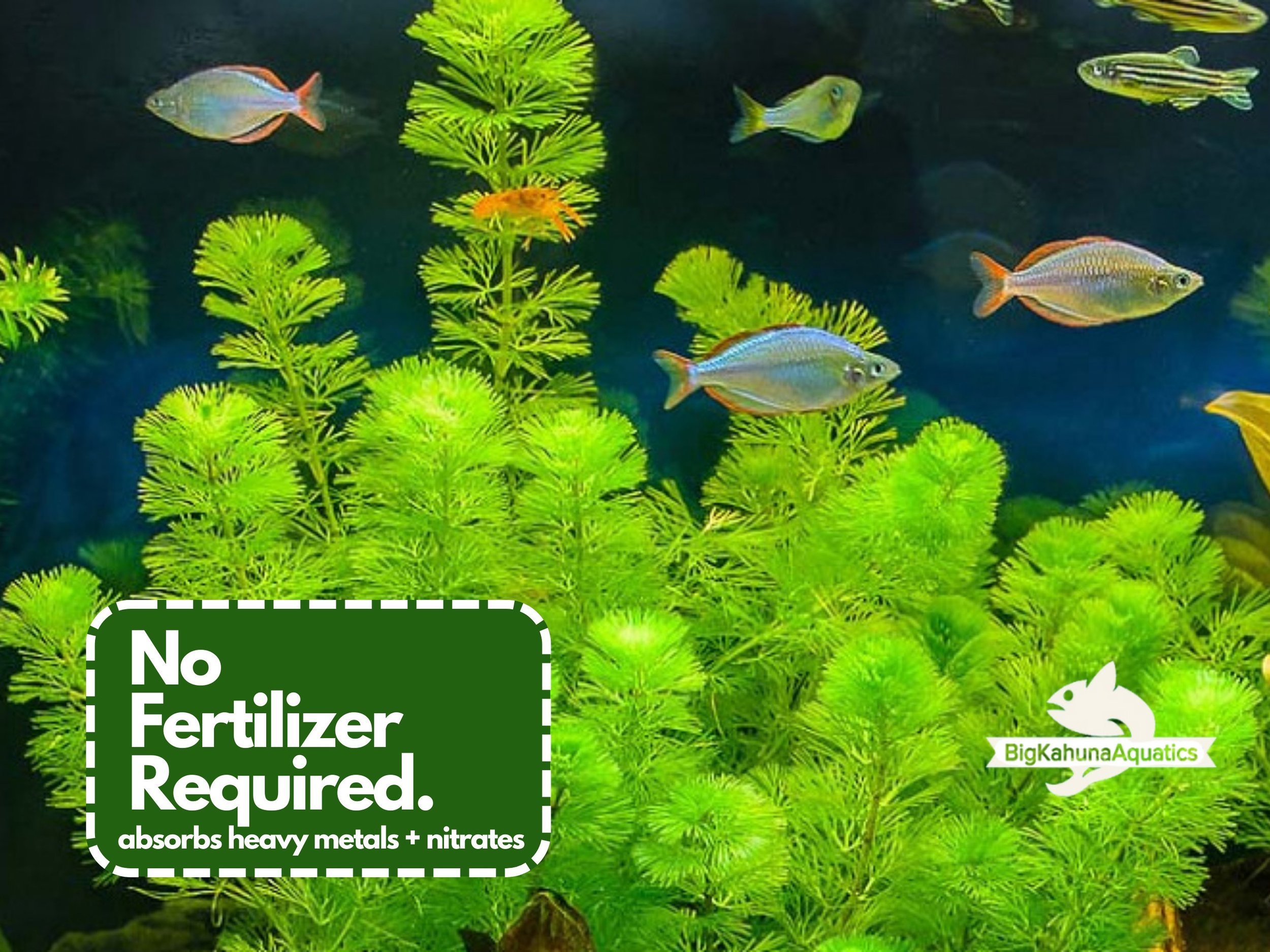Cabomba Caroliniana
$7.99
Buy 2 Get 1 Free: Valid on all items with Buy 2 Get 1 Free in the title. Just purchase 2, and we will send the 3rd free.
📬Free Priority Mail shipping upgrade when you spend $50 or more. Get your plants quicker and healthier!
✅ Snail Free Plants!
✅ Live Arrival Guarantee!
✅ 1 Month After Order Customer Support(Plants aren't doing well? We can help you diagnose the problem!)
✅Satisfaction Guaranteed!
🤑Spend $35 or more on your order and we will send you a free plant or a nerite snail. Your choice! Just leave us a note with your order and it will be included!
❓Have more questions? Just send us a message and we will respond within a few hours.
🤔 Not sure what to order? Click the custom order button on our shop page and we can help you pick out what would be best for your aquarium!
This is for 1(one) leaded bundle of Cabomba Caroliniana.
Satisfaction guaranteed. Please send us a message if you have any questions.
WINTER SHIPPING:
- Shipping MIGHT be postponed if the temperature in your area is below 38 or above 85 for the coming week
Due to cold weather, live arrival guarantee only apply if you purchase the following shipping upgrade: https://www.etsy.com/listing/1332755100/shipping-upgrade-priority-mail-hot-pack?click_key=8d0594d08eff6f61e1e29b4c79d24b6367d4679b%3A1332755100&click_sum=35d97716&ref=shop_home_active_14&frs=1
Aquarium pH: 6.8 – 7.5. Some hobbyists suggest lower is also acceptable.
Water Temperature: Tropical fish range, 72 – 82 degrees Fahrenheit.
Lighting: Medium to High
Tank Size: Small to Large
Cabomba (Cabomba carolinia), also known as fanwort is an aquatic plant that is extremely popular in the aquarium hobby. It may refer to one of two plants – green cabomba or red cabomba. With that being said, green cabomba is widely available, whereas red (purple) cabomba is relatively rare, and can be extremely difficult to grow in the home aquarium.
This aquatic plant is native to the southeastern United States, where even in its native range it is considered a problem weed. Due to the aquarium trade, it has become established as an invasive species in the western and northern United States, and is of particular concern as an invasive species in Australia.
Cabomba is an adaptable plant, and it can grow in nearly any environment that features slow moving or stagnant water. It is found in streams, rivers, ponds, ditches, canals and small lakes. It grows densely in the wild, and will crowd out other plants and even wildlife. This can also occur in the home aquarium, so attention must be paid to trimming this plant regularly.
Care
Cabomba is an extremely easy to care for plant, and will thrive in most aquarium settings. It must be grown fully submerged, although it may occasionally have emergent flowers. It is an excellent oxygenating plant, and is useful in newly setup aquariums, or ponds.
It should be planted in the substrate, and it will grow very fast in an aquarium with adequate nutrients. It is known to grow up to one inch a day, and it consumes most of its nutrients from the water column. Because of this, the water should be fertilized regularly and it is always a good idea to add Seachem Flourish during every water change for optimal growth.
Cabomba prefers aquariums with high amounts of lighting, and it does best when at least 3 watts per gallon are provided. While it doesn’t require CO2, it will greatly improve the growth and the appearance of this plant. If leaves begin to fall from the plant, it usually indicates a CO2 deficiency, though it can also reflect issues with water quality.
When choosing a light, it’s best to use fluorescent bulbs. Either T5 or T8 bulbs can be used, and they should be full spectrum bulbs. While some aquarists have reported success with LED lights, at this time the preference is still towards fluorescent lights.
Propagation
Cabomba is propagated through cuttings, which should be at least 2 inches in length, though longer cuttings will become established faster. The cuttings usually need high amounts of lighting to root, and they should be provided with a rich substrate.
In the wild, the stems of Cabomba breaks apart during the winter months and sink to the bottom. In the spring, each piece of the Cabomba plant will form a new plant. Obviously this is difficult to accomplish in the home aquarium, so this is rarely if ever done indoors.
📬Free Priority Mail shipping upgrade when you spend $50 or more. Get your plants quicker and healthier!
✅ Snail Free Plants!
✅ Live Arrival Guarantee!
✅ 1 Month After Order Customer Support(Plants aren't doing well? We can help you diagnose the problem!)
✅Satisfaction Guaranteed!
🤑Spend $35 or more on your order and we will send you a free plant or a nerite snail. Your choice! Just leave us a note with your order and it will be included!
❓Have more questions? Just send us a message and we will respond within a few hours.
🤔 Not sure what to order? Click the custom order button on our shop page and we can help you pick out what would be best for your aquarium!
This is for 1(one) leaded bundle of Cabomba Caroliniana.
Satisfaction guaranteed. Please send us a message if you have any questions.
WINTER SHIPPING:
- Shipping MIGHT be postponed if the temperature in your area is below 38 or above 85 for the coming week
Due to cold weather, live arrival guarantee only apply if you purchase the following shipping upgrade: https://www.etsy.com/listing/1332755100/shipping-upgrade-priority-mail-hot-pack?click_key=8d0594d08eff6f61e1e29b4c79d24b6367d4679b%3A1332755100&click_sum=35d97716&ref=shop_home_active_14&frs=1
Aquarium pH: 6.8 – 7.5. Some hobbyists suggest lower is also acceptable.
Water Temperature: Tropical fish range, 72 – 82 degrees Fahrenheit.
Lighting: Medium to High
Tank Size: Small to Large
Cabomba (Cabomba carolinia), also known as fanwort is an aquatic plant that is extremely popular in the aquarium hobby. It may refer to one of two plants – green cabomba or red cabomba. With that being said, green cabomba is widely available, whereas red (purple) cabomba is relatively rare, and can be extremely difficult to grow in the home aquarium.
This aquatic plant is native to the southeastern United States, where even in its native range it is considered a problem weed. Due to the aquarium trade, it has become established as an invasive species in the western and northern United States, and is of particular concern as an invasive species in Australia.
Cabomba is an adaptable plant, and it can grow in nearly any environment that features slow moving or stagnant water. It is found in streams, rivers, ponds, ditches, canals and small lakes. It grows densely in the wild, and will crowd out other plants and even wildlife. This can also occur in the home aquarium, so attention must be paid to trimming this plant regularly.
Care
Cabomba is an extremely easy to care for plant, and will thrive in most aquarium settings. It must be grown fully submerged, although it may occasionally have emergent flowers. It is an excellent oxygenating plant, and is useful in newly setup aquariums, or ponds.
It should be planted in the substrate, and it will grow very fast in an aquarium with adequate nutrients. It is known to grow up to one inch a day, and it consumes most of its nutrients from the water column. Because of this, the water should be fertilized regularly and it is always a good idea to add Seachem Flourish during every water change for optimal growth.
Cabomba prefers aquariums with high amounts of lighting, and it does best when at least 3 watts per gallon are provided. While it doesn’t require CO2, it will greatly improve the growth and the appearance of this plant. If leaves begin to fall from the plant, it usually indicates a CO2 deficiency, though it can also reflect issues with water quality.
When choosing a light, it’s best to use fluorescent bulbs. Either T5 or T8 bulbs can be used, and they should be full spectrum bulbs. While some aquarists have reported success with LED lights, at this time the preference is still towards fluorescent lights.
Propagation
Cabomba is propagated through cuttings, which should be at least 2 inches in length, though longer cuttings will become established faster. The cuttings usually need high amounts of lighting to root, and they should be provided with a rich substrate.
In the wild, the stems of Cabomba breaks apart during the winter months and sink to the bottom. In the spring, each piece of the Cabomba plant will form a new plant. Obviously this is difficult to accomplish in the home aquarium, so this is rarely if ever done indoors.
Quantity:






